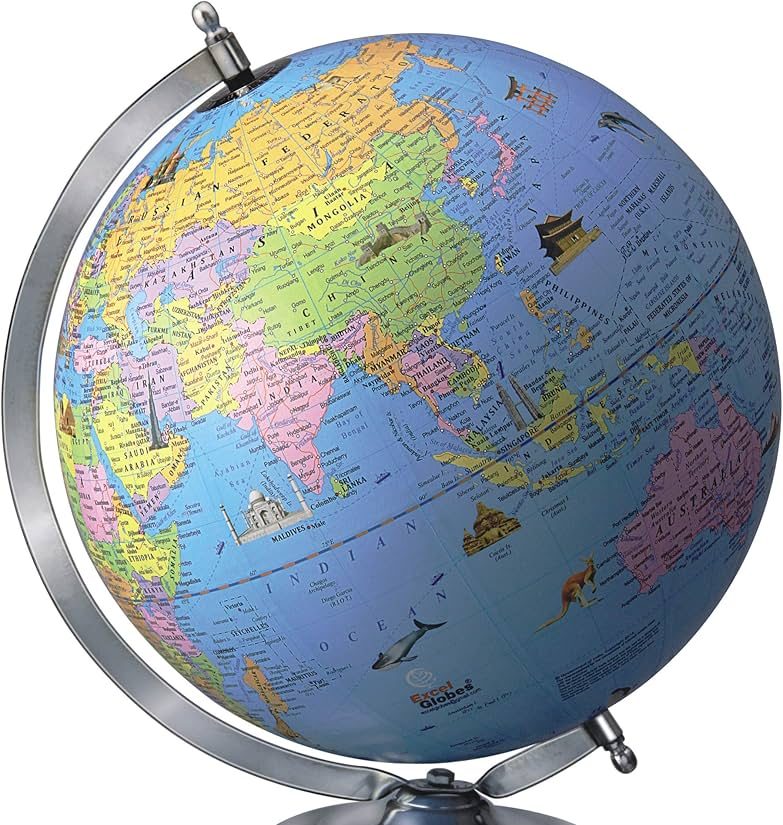By Yvan David Danisa.
Beijing, February 27, 1972 — On the final evening of President Richard Nixon’s historic visit to China, the United States and the People’s Republic of China issued the Joint Communiqué, more commonly known as the Shanghai Communiqué. This moment marked a dramatic shift in global diplomacy, effectively beginning to unravel a post–World War II geopolitical alignment that had defined decades of international relations.
It marked the quiet death of what was once called “Triangular Logic” and its replacement by what some in US State Department, had christened their “China Card.” The so-called “Logic” took shape in the mid-1960s. It was triggered by Beijing’s 1964 decision to reopen the question of 19th-century Sino-Soviet border treaties—what it called the “unequal treaties” imposed by Tsarist Russia on the Qing dynasty.
At the same time, Washington was crafting its détente strategy with Moscow. For U.S. policymakers, the open rift between the two communist giants offered an opportunity. The border war confirmed what they had begun to suspect, Beijing and Moscow were not ideological twins, but rival powers.
This realization gave birth to what became known in Washington circles as “Triangular Logic.”Until then, Washington saw Beijing as Moscow’s sidekick. In 1949, Mao Zedong’s Communist Party had seized control of mainland China, forcing Chiang Kai-shek into exile in Taiwan with Soviet backing. This shift triggered a blunt worldview in Washington. Foreign policy was shaped through a narrow, binary lens that framed global affairs as a battle between communism and the so-called liberal order.
It was a world divided into “us or them.” A worldview both deeply simplistic and dangerously wrong. They called it the Cold War. Their Cold War in Europe, their Cold War in Asia, and their Cold War everywhere else.
George Kennan’s containment doctrine, crystallized in the NSC-68, laid the foundation of America’s Cold War strategy. But it misunderstood the Soviet Union’s fundamental motivations. Bolshevism was akin to Pierre Robespierre’s Jacobinism, yes. But what seemed its expansionist instinct under Josef Stalin was driven less by ideological zeal than by a hard-nosed concern for security east of the Elbe. Stalin had killed Trotsky’s vision of permanent revolution by 1927. Soviet policy from then on was shaped not by Marxist fervor but by geopolitical calculation.
States act in their interests. Even when dominated by ideologues, their foreign policies are shaped by pragmatism. This was clear in 1949, when China’s communists took Beijing. They did not merge with the USSR into a global revolutionary bloc. There was no union of parties, no fusion of states. Despite their shared ideology, Soviet and Chinese interests diverged.
Moscow, for its part, resisted Beijing’s push for direct confrontation with the United States. The tipping point came with the 1969 border conflict at Damansky (Zhenbao) Island on the Ussuri River. It was an uneasy relationship between two ancient powers, neighbors with long histories and boundaries. Ever opportunistic, the West made an instinctive drive for the jugular, i.e., sever what was seen as an umbilical cord of the co-joined twins. Moscow and Beijing were neither Siamese twins no implacable foes, but neighbors who could fight over their pond. But it was still their pond.
Western policymakers missed the point. Trapped in Westphalian notions of statehood, they misunderstood the true nature of China and Russia. These were not nation-states in the Western image. They were civilizational centers, shaped over centuries, not by ideology alone, but by deep-rooted histories of identity, survival and space.
Neither was ever fully occupied, colonised or absorbed by the other. Each existed beside the other, mirrored yet distinct. Their joint support for Pyongyang in the Korean War was not born of communist solidarity. It was a regional reflex. When General MacArthur crossed the 38th parallel, China responded by sending 200,000 troops across the Yalu River. Not to spread revolution, but to block an intruder at its doorstep.
The”Chinese Card.” After the 1969 border clash, Washington viewed Sino-Soviet relations as “no longer aligned”. Henry Kissinger moved quickly, arranging Nixon’s visit to China and meeting Premier Zhou Enlai. Mao gave his blessing. In 1971, a new strategy was born.
What did the Chinese gain? Everything. Access to global trade. Market entry. Diplomatic recognition. Eight years later, the U.S. granted China Most-Favored-Nation (MFN) status and secured promises on intellectual property. It was a masterstroke, but a curious one. This was not about ideology. It was about markets, influence, and the architecture of global capital.
The Cold War was never purely ideological. It was a contest over control of the arteries of global commerce. For centuries, Western powers had consolidated trade routes, sea lanes, and financial instruments. They built an interconnected system of markets and credit, stretching from colonial outposts to Wall Street. The North Atlantic Treaty Organisation (NATO) was a military appendage of this order. The NSC-68’s depiction of the USSR as an oligarchic slave state was a philosophical misreading. Yet it became the bedrock of policy.
This misunderstanding had global consequences. Across Africa, Asia, and Latin America, liberation movements found allies not in Washington, but in Moscow. Why would revolutionaries seeking to escape colonial rule turn to a supposed oligarchy? Because they understood power. They saw the USSR not as a utopia, but as a counterweight to Western domination.
The U.S. missed the point. It treated regime change and democratization as universal goods. From the Arab Spring to the Color Revolutions, the goal was to replace so-called corrupt dictators with liberal democrats. It was another narrow vision, and deeply mistaken. The approach rarely succeeded. In many cases, the very states that claim to champion liberal democracy have acted with impunity in the Global South—through coercion, plunder, and violence. So it’s no surprise their troops aren’t welcomed with flowers. They meet resistance at every turn.
Yet, the West still holds real power. Not because of its slogans about democracy and human rights, but because of access. Access to capital. Access to global markets. And that access is granted by one figure—the gatekeeper. He blesses, he blocks. He sanctions, and he un-sanction.
Communism didn’t collapse in 1990 because of ideology. It collapsed because the USSR had no access to the heart of the global economy. Reaganomics and Thatcherism completed the consolidation process of global wealth into a credit-based system (The global expansion of local capital enables its annexation of distant means of production, merging with other extractive funds to exploit new victims).
Credit is more than money. It is a claim on the future, a proxy for control over global trade routes, production systems, and policy frameworks. The Soviet Union’s COMECON allies (Council for Mutual Economic Assistance) were largely agrarian remnants—ill-equipped to compete in a global economy. Locked out of international markets, the Soviet Union faced the hard limits of autarky. Efficiency and state power, no matter how ruthless, could only go so far.
What the West denied the Soviet Union, it handed to China on a silver platter—the “Chinese Card.” The irony is sharp. Washington assumed Chinese Communist leaders wouldn’t grasp the play. They were peasants, after all—or so the dismissive thinking went, shaped by Cold War arrogance and condescension toward the Global South. But in Deng Xiaoping, they encountered not a doctrinaire and drab ideologue, but a pragmatic statesman, a political economist with historical depth. His verdict on the opportunity was simple and devastatingly clear: “It doesn’t matter the color of the cat, as long as it catches mice.”
Washington bet that access to global credit would liberalize China, unravel the Party, and bury the bureaucrats. But the opposite happened. The cat didn’t change. It devoured all the mice and turned into a tiger.
Kennan’s successors missed the plot. Francis Fukuyama, in his premature triumphalism, declared the “end of history,” convinced liberal democracy had won the final battle. In doing so, he misread the deeper functions of credit, capital, and global control. If ideology were the decisive factor, China should have collapsed alongside the Soviet Union. It didn’t. It thrived. And it never needed to fully open its markets as a concession.
Perhaps the assumption in Western capitals was that Beijing wouldn’t notice the game—or couldn’t play it. The Party, they thought, would soon be swept aside by market forces. Tiananmen Square, in their eyes, was a sign that collapse was imminent. Instead, China walked in through the open doors of the global system and became a central player.
Now, in Washington and Brussels, the panic is visible. They ask themselves how it ever came to this. The U.S. has just imposed over 200% tariffs on key Chinese imports. The European Union (EU) has followed with threats, probes, and sanctions. The slogans repeat, China cheats. The yuan is undervalued. The system is rigged.
But the tiger is no longer at the gate. It’s inside the house. Who, now, will bell the cat?
That same misunderstanding continues today. We see it in attempts to peel Beijing away from Moscow. We see it in efforts to trigger regime change in Tehran. It’s the same strategy repackaged—Chinese Card, Russian bait. Always misreading the room.
Containment never accounted for historical nuance. It assumed that communist states would merge into a global bloc. They didn’t. When the Sino-Soviet split occurred, Western theorists claimed credit. They hadn’t caused it. They didn’t control it. But they convinced themselves they held a card.
Today, the pendulum swings again. China and Russia move closer, bound not by ideology, but by a shared resistance to Western dominance. One axis runs through the Black Sea and Balkans, the other through the South China Sea and the Strait of Malacca. Another through the Caucasus and Persia. These are lines of resistance. They shape the new geometry of power.
Washington must avoid repeating its old mistakes. Undermining Russia or overestimating the EU will not produce stability. The balance lies in acknowledging the weight of China and Russia as historical forces. The Sino-Russian alignment was never ideological. It was always civilizational.
Even at the height of their split, the Soviet Union gave China the tools to build an atomic bomb. That fact is rarely discussed in mainstream accounts. It was an act of trust. Moscow never helped another nation do the same. Today, China and Iran both possess hypersonic missile technology (where was the assistance from?). No Western nation has matched that feat.
Still, policymakers search for ways to divide the pond. But China was never a card in anyone’s deck. Not in 1949. Not in 1971. Not now.
Xi Jinping’s Belt and Road Initiative has triggered alarm. Moscow’s stance on NATO expansion has provoked a global crisis. These moves are not provocations. They are expressions of sovereignty. Of presence. Of civilizational weight.
Triangular Logic—once the delicate balancing act of equidistant relations between Washington, Beijing, and Moscow—made sense in its time. But that time has passed. The framework no longer holds. It was a strategy born of circumstance, now buried beneath a tangle of contradictory policies out of Washington.
How does one wage proxy war against Russia, while projecting a policy of strategic ambiguity towards China? How can the U.S. hope to contain Moscow in Europe and Beijing in Asia simultaneously? How does Washington aim to uproot Russian influence in Ukraine, while walling off China within its mainland? How can NATO be extended towards the margins of Smolensk and Rostov-on-Don, while AUKUS runs down the mouth of the South China Sea? How can threats of regime change in Tehran be made without destabilizing Russia’s interests in the Caspian Sea, or colliding with joint Sino-Russian stakes in the Caucasus and beyond— a strategic region of their shared geopolitical pond?
To pursue all of this and still expect to prevent a full-scale Moscow-Beijing alliance is not strategic thinking. It is chaos masquerading as policy. The Cold War logic has run its course. The world cannot be managed by recycled doctrines and Cold War reflexes.
Containment has failed. The “Chinese Card” was a mirage.




